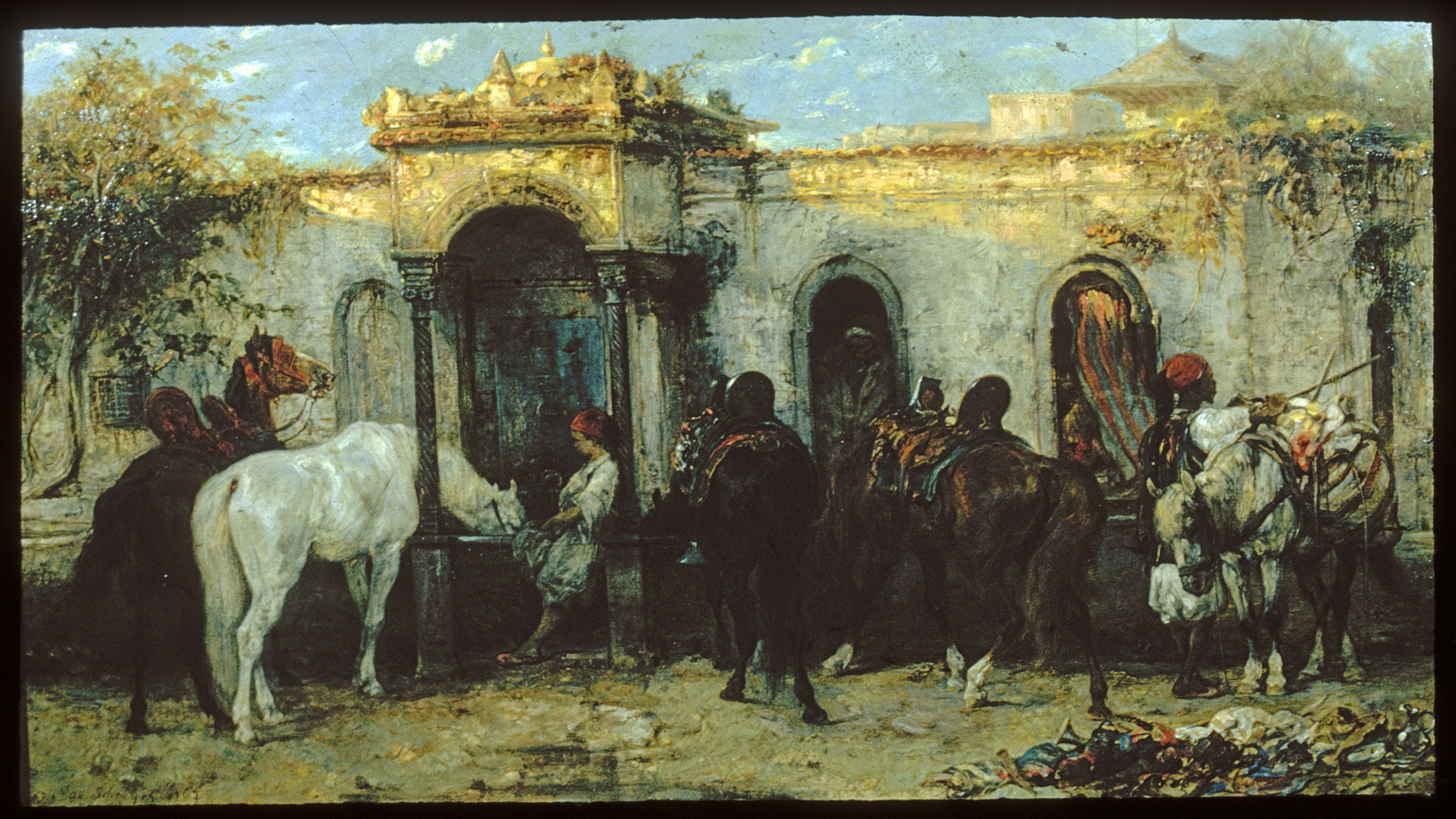Arabs in Egypt, Sunrise
(18th and 19th Centuries )
When the German artist Schreyer moved to Paris in 1862, critics compared his paintings of the Near East to the works of the orientalists Eugène Delacroix, Alexandre-Gabriel Decamps, and Eugène Fromentin. In 1859, Schreyer traveled extensively in Egypt and Syria, learning Arabic and immersing himself in Near Eastern culture.
Seen is a courtyard of an inn at dawn. The rising sun bathes the top walls with warm light, leaving the foreground in shadow; horses are being prepared for the day. One, already packed, is tended by an Arab, three others are saddled, and another, a handsome white steed, drinking water from a well, is watched by a young boy. Strewn across the ground at the right are various supplies.
Inscription
Provenance
Provenance (from the French provenir, 'to come from/forth') is the chronology of the ownership, custody, or location of a historical object. Learn more about provenance at the Walters.
Henry Probasco, Cincinnati [date and mode of acquisition unknown]; Henry Probasco Sale, American Art Association, New York, April 18, 1887, no. 69; William T. Walters, Baltimore, 1887, by purchase [S. P. Avery as agent]; Henry Walters, Baltimore, 1894, by inheritance; Walters Art Museum, 1931, by bequest.
Conservation
| Date | Description | Narrative |
|---|---|---|
| 5/31/1966 | Treatment | varnish removed; lined; coated; inpainted |
| 9/15/1983 | Treatment | coated |
Measurements
H: 16 3/4 x W: 29 5/16 in. (42.5 x 74.5 cm); Framed H: 29 1/2 x W: 42 x D: 4 1/2 in. (74.9 x 106.7 x 11.4 cm)
Credit Line
Acquired by William T. Walters, 1887
Location in Museum
Not on view
Accession Number
In libraries, galleries, museums, and archives, an accession number is a unique identifier assigned to each object in the collection.
In libraries, galleries, museums, and archives, an accession number is a unique identifier assigned to each object in the collection.
37.136


